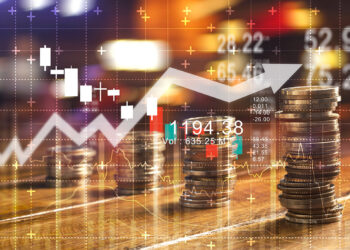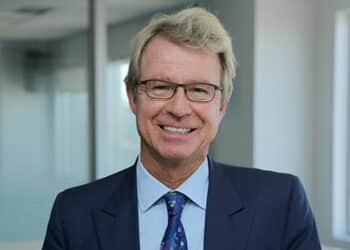The World Gold Council (WGC) has reported that the precious metal ended the month up 12 per cent at US$3,825/oz, marking a 47 per cent year-on-year increase – the highest return in a calendar year since 1979.
“The only drag came from some rebalancing and profit-taking – captured in a gold price lag in the model and reflected in the intraday price dip on 30 September, which was quickly bought,” the WGC’s September report stated.
Gold exchange-traded fund (ETF) flows saw their strongest month on record in September, according to the council. Net inflows totalled US$17.3 billion (146t), led by North America (US$10.6 billion) and Europe (US$4.4 billion). Asia also joined the rally (US$2.1 billion), while other regions reported modest inflows.
“COMEX managed money net longs participated in gold’s upward price action, adding US$9 billion (+33t),” the report stated.
The rally has continued into October, with spot gold crossing the US$4,000 benchmark for the first time on Wednesday as investors sought safe-haven assets amid the ongoing US government shutdown.
With September historically the worst calendar month for US stocks – and October known for major corrections – the council noted it’s a nervous time for equity investors.
“The likely threat to equities is acute, given lofty valuations, Goldilocks earnings projections, high market concentration, extended positioning and technical red flags.”
Gold, according to the council, remains a strong long-term diversifier and a reliable short-term hedge against equity drawdowns.
“But because gold is not a contractual hedge, the good performance during equity corrections isn’t guaranteed,” the report stated.
The WGC also warned that gold might not respond as robustly to an equity sell-off due to its current “overbought” state.
“There is probably some merit to this. From a tactical perspective, gold might struggle to find marginal investment buyers in this scenario, even as long-run strategic positioning remains light.”
“An additional concern perhaps is that other factors might conspire against gold’s performance: oversold rates or dollar, over-egged fears and so on,” the council said.
After examining historical equity drawdowns, the council found that initial conditions are not reliable indicators of gold’s performance during such periods.
“The only factor that really seems to matter is where the US dollar goes and, to a lesser extent, where it sits in valuation terms prior to the sell-off.”
“The trajectory of yields only matters if we include the volatile mid-1970s and early 1980 observations, while the level of spreads only matters if we exclude the volatile 1970s.”
Central banks, following a pause in July, resumed buying in August, adding a net 15t to global reserves. The National Bank of Kazakhstan led the purchases, while Bulgaria’s and El Salvador’s central banks also increased their holdings.
“The recent slowdown in buying does not necessarily signal that central banks as a whole are losing interest in gold,” the WGC said.
“Recent developments show that central banks remain keen to continue increasing their exposure.”
The WGC remains confident that gold will maintain its position and potentially gain further if equities face a correction.
“Perhaps only a major liquidity squeeze could upend both gold and equities, but there are no clear signs of fractures in credit or banking sectors … yet.”
Meanwhile, the September 2025 Resources and Energy Quarterly, released on Tuesday, forecasts that gold will overtake LNG as Australia’s second-highest value export in 2025–26.
“Record prices and rising export volumes are forecast to push Australian gold earnings to $60 billion in 2025–26 and 2026–27,” the report said.
According to nabtrade, domestic ETFs related to gold saw a 170 per cent increase in confirmations and a 199 per cent increase in turnover from 2024 to 2025. The most popular domestic ETF was VanEck’s Gold Miners.
International gold-related ETFs recorded a 223 per cent increase in turnover over the same period, led by SPDR Gold Shares and the VanEck Junior Gold Miners ETF.
Meanwhile, confirmations for Global X’s Physical Gold (GOLD.AU) more than tripled over the past 12 months, with turnover up 342 per cent.
“We are seeing significant increases in investor exposure … Gold fell out of favour with investment advisers some decades ago, so this resurgence is notable.”






